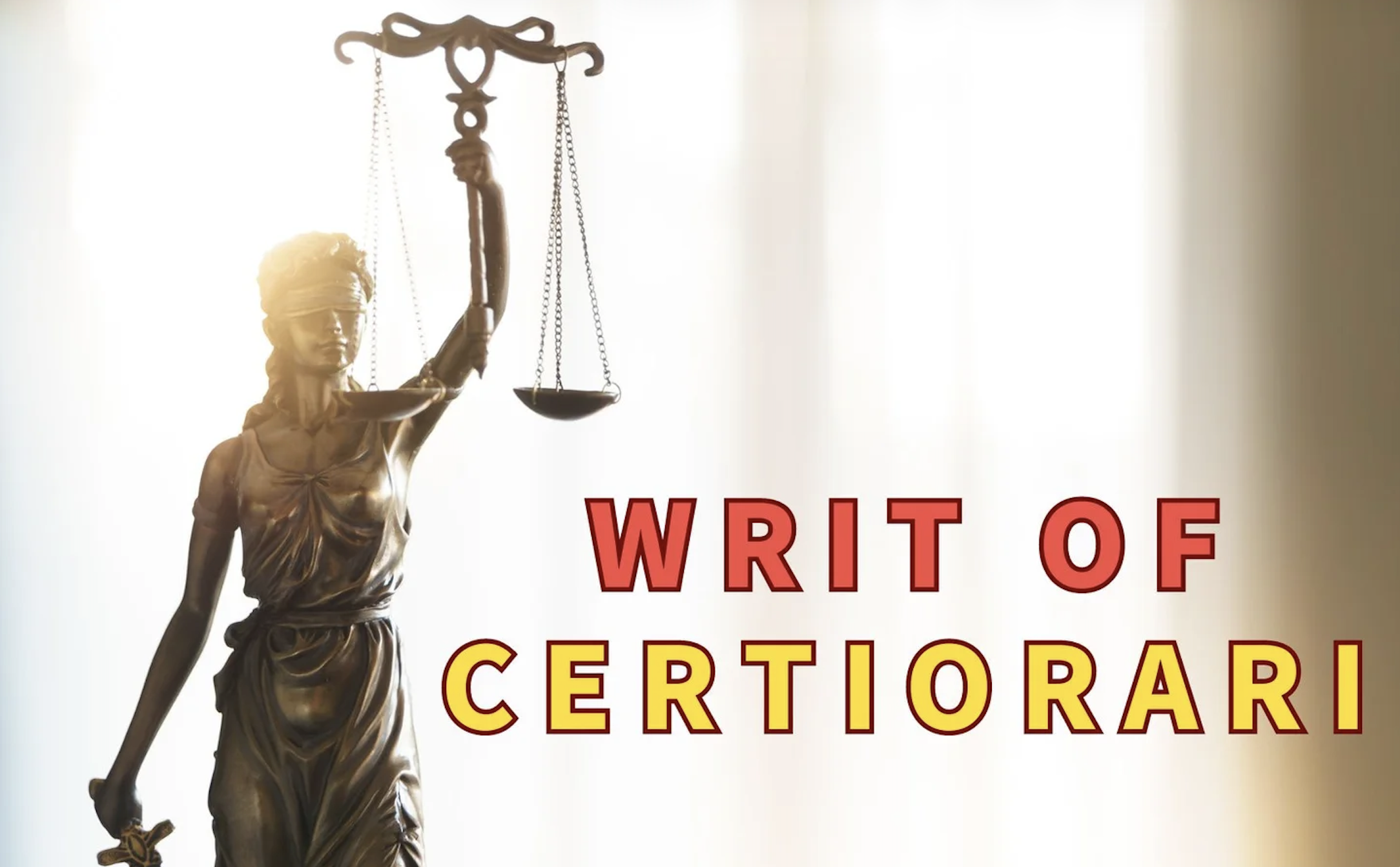Fix the Court Urges SCOTUS to Grant Cert. in Cop Corruption Case
The case — which, incredibly, has ties to “The Wire,” Trump v. U.S. and Roundup weedkiller — involves shady “high-low” agreements on appeal used by attorneys of corrupt Baltimore cops to avoid paying out more in damages
Fix the Court — for the first time in the organization’s history — is calling for a cert. grant in a pending SCOTUS petition, 25-244, Simon v. Gladstone.
 The case has many hallmarks of what’s typically seen on the merits docket, from public corruption to guns to unresolved questions on tolling and transparency, and as such, FTC hopes the justices will grant review — or at the very least, call for a response from Gladstone, who’s waived the right to respond — when the nine bring it up at conference this Friday.
The case has many hallmarks of what’s typically seen on the merits docket, from public corruption to guns to unresolved questions on tolling and transparency, and as such, FTC hopes the justices will grant review — or at the very least, call for a response from Gladstone, who’s waived the right to respond — when the nine bring it up at conference this Friday.
The case comes from Baltimore, and the Simon here is Demetric Simon (not David Simon, but David included Demetric’s story in the former’s “We Own This City” HBO series). Demetric was assaulted in 2014 by police officers in the city’s Gun Trace Task Force; soon after, the officers planted a gun at the scene, which resulted in Demetric spending nearly a year in prison.
Eventually, local authorities caught on to the wider corruption in the GTTF, which meant that Baltimore was potentially on the hook for many tens of millions of dollars in payouts for its officers’ actions. So city attorneys took desperate measures — and here’s where the cert.-worthy issue comes in — by engaging in a plan to make “high-low” side deals on appeal with cooperating plaintiffs’ attorneys that lowballed the first group of victims that came forward and made it harder for victims who sued later on to win damages.
(A high-low agreement at the trial level is okay: it guarantees that a plaintiff receives a minimum monetary amount regardless of the verdict and stops a defendant from facing a massive judgment. The Supreme Court has permitted their use in the past — including, see p. 19, in Nixon v. Fitzgerald, a case cited extensively in Trump v. U.S. — though the justices haven’t considered the ethics of high-low side deals on appeal.)
For the Baltimore appeal deal to work, four conditions had to be met. First, a plaintiff’s attorney had to settle his client’s case against a corrupt officer and publicly state that the settlement amount was for $32,000 (the “low”). Second, the plaintiff’s attorney and city attorneys had to, in the settlement documents, agree to “stipulated facts” that were heavily biased in favor of the city. Third, the plaintiff would appeal his case.
Fourth, with these city-favorable facts locked in — meaning future cases brought by GTTF victims would be harder to win — the original plaintiffs would be given a secret bonus (“the high”) of up to $400,000, with up to $150,000 guaranteed.
In other words, a plaintiff that agreed to this pay-for-precedent scheme would receive $150,000 guaranteed, and if he happened to win on appeal, even with the city-favored “facts” in the record, he’d walk away with as much as $400,000.
The only reason these agreements came out was due to the fact that Baltimore is a public entity that has to account for all the taxpayer money it spends each year (see pp. 41ff).
Around this time, another high-low side deal on appeal happened to be made public, and it’s one involving the multibillion lawsuit against Monsanto over claims that its Roundup weedkiller caused cancer. This deal is also crooked, as by its terms, Monsanto paid a Roundup victim who won in the court below (Carson v. Monsanto in S.D. Ga.) to appeal his win to the Eleventh Circuit. One judge on that court, Charles Wilson, said such a scheme “abuses this court’s process” (p. 17).
Why’d Monsanto pay to appeal? Per Wilson, “This agreement appears to be nothing more than an attempt by Monsanto to seek a favorable appellate decision [in CA11] in conflict with the Ninth Circuit’s decision in Hardeman v. Monsanto” — i.e., a circuit split that could compel a cert. grant before a business-friendly high court.
This case and several others are currently pending at SCOTUS, but the justices don’t have to wait any longer than Friday to put a kibosh on this type of corruption.
“Attorneys are famous for engaging in all sorts of creative maneuvers to achieve the best outcome for their clients,” FTC’s Gabe Roth said. “But the high-low side deal in Baltimore clearly crosses a line. The Supreme Court can start to fix this injustice as soon as this week, and I hope they take the opportunity to do so by granting review in Gladstone.”
For more information about Simon v. Gladstone, please contact Simon’s attorney Michael Wein at weinlaw@hotmail.com.